Volume 19, Issue 3
Displaying 1-5 of 5 articles from this issue
- |<
- <
- 1
- >
- >|
ORIGINALS
-
Article type: original
2000Volume 19Issue 3 Pages 125-134
Published: May 30, 2000
Released on J-STAGE: July 28, 2000
Download PDF (126K) -
Article type: original
2000Volume 19Issue 3 Pages 135-141
Published: May 30, 2000
Released on J-STAGE: July 28, 2000
Download PDF (96K) -
Article type: original
2000Volume 19Issue 3 Pages 143-149
Published: May 30, 2000
Released on J-STAGE: July 28, 2000
Download PDF (83K) -
Article type: original
2000Volume 19Issue 3 Pages 151-156
Published: May 30, 2000
Released on J-STAGE: July 28, 2000
Download PDF (82K) -
Article type: original
2000Volume 19Issue 3 Pages 157-163
Published: May 30, 2000
Released on J-STAGE: July 28, 2000
Download PDF (120K)
- |<
- <
- 1
- >
- >|
